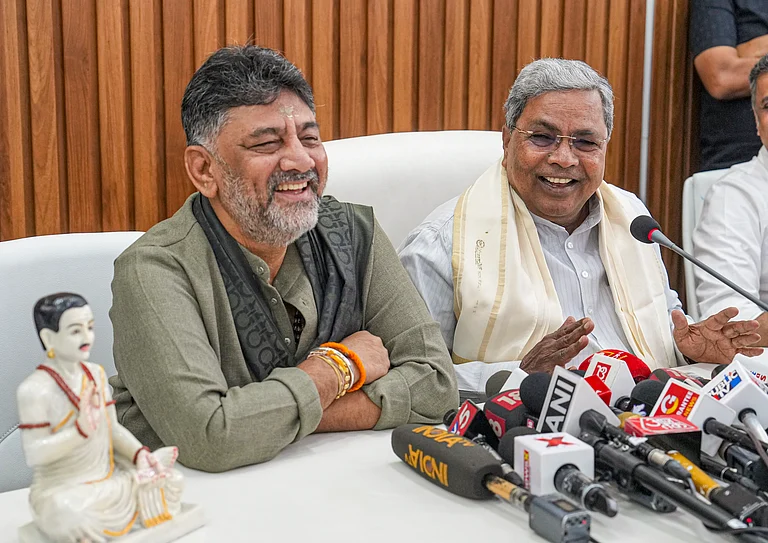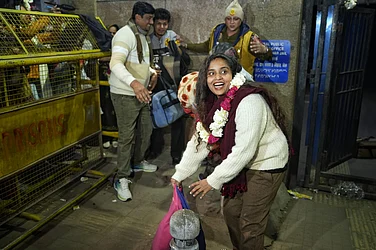The speculation around ‘One Nation, One Election’ sparked debate again as the Central Government constituted a committee under the chairmanship of former President Ram Nath Kovind to examine its feasibility. The committee is formed to submit a report to address the existing electoral mode of India where the country is allegedly on ‘permanent campaign’ mood throughout the year.
The committee has been tasked with the responsibility to “examine and make recommendations for holding simultaneous elections to the Lok Sabha, State assemblies, municipalities, and panchayats, keeping in view the existing framework under the Constitution of India and other statutory provisions”
The entire idea of ONOE revolves around the concept of merging the timings of Lok Sabha, Rajya Sabha, Municipalities and Panchayat elections throughout the country. The committee is also tasked to suggest phases and timeframes within which the election can be held.
While the move has ruffled the political feathers, this isn’t the first time the Modi government has talked about ONOE. Since 2014, it has always been on the agenda of the BJP. The arguments in favour of it refer to cost-cutting as a major ground to synchronise the elections.
Legal feasibility and what is the process to implement it?
The major concern pertaining to ONOE lies in the possibilities of early dissolving of the governments either due to loss of trust or defections. What if the Central government or the State government collapses mid-term, will it lead to another set of elections in the state, or would the President’s rule be imposed?
The only way to implement it, the legal minds think, is to amend a few articles of the constitution.
Leading constitutional experts have asserted that achieving this goal would need five successive amendments to the Constitution: Article 83, 85, 172,174 and 356. As claimed in media reports each of these amendments must secure approval from Parliament with a two-thirds majority as well as the backing of 50 percent of state assemblies.
However, even if these numerical thresholds are met, there are practical challenges to consider. If this reform were to materialize in the near future, questions arise regarding the fate of state assemblies such as Rajasthan, Madhya Pradesh, and Chhattisgarh, where the terms of current assemblies are nearing their conclusion. Additionally, the situation in Karnataka, where a new assembly has recently been established, presents its own set of complexities.
The newly appointed committee which includes Amit Shah as well has been asked to lay down the principles of legal scrutiny and suggest alteration in specific amendments to the constitution, which is Representation of People Act 1950, Representation of People Act 1951 and other legal changes that needs to be taken care of while looking to hold simultaneous elections.
In 2018, the Law Commission convened a two-day consultation on the concept of simultaneous elections. However, only four political parties, namely the Shiromani Akali Dal, the AIADMK, the Samajwadi Party, and the Telangana (now Bharat) Rashtra Samithi, lend their support to the idea. On the other hand, nine parties, including the Goa Forward Party (an ally of the BJP), Trinamool Congress, Aam Aadmi Party, DMK, Telugu Desam Party, CPI, CPI-M, Forward Bloc, and the JD(S), opposed the proposal. They argued that it was "undemocratic" and ran counter to the principles of federalism. The CPI-M even described it as being in conflict with the Constitution.
The concept of One Nation, One Election (ONOE) appears to be at odds with the principle of 'federalism,' as it is based on the premise that the entire country functions as a single entity, contradicting the essence of Article 1, which envisions India as a "Union of States."
ONOE is not a new agenda
The practice of Indians voting simultaneously for both the Lok Sabha and state assemblies was observed in the years 1952, 1957, 1962, and 1967. However, this pattern changed when the Congress party, which was in power at the center, altered the course by dismissing state governments. Consequently, the President's rule had been imposed in total 115 times since 1951.
The concept of 'One Nation One Election' gained prominence, notably through the efforts of LK Advani.
In 1999, a law commission chaired by Justice Reddy recommended the implementation of simultaneous elections.
A parliamentary standing committee report in 2015 reiterated this recommendation, arguing that the absence of simultaneous elections was detrimental to effective governance.
In 2016, Prime Minister Narendra Modi voiced his support for the idea. Subsequently, a NITI Aayog working paper in 2016 was followed by a law commission working paper in 2018, both supporting the concept of One Nation One Election.
Is the Election Commission adequately prepared to manage individual elections?
The Election Commission of India, during its previous examination of this matter, identified that conducting simultaneous elections would necessitate a substantial investment in Electronic Voting Machines and Voter Verifiable Paper Audit Trail (VVPAT) machines. The cost of upgrading the infrastructure to conduct elections concurrently would amount to a significant sum.
Furthermore, the current committee will also assess the requirements in terms of personnel and logistical support, which includes EVMs, VVPATs, and other resources necessary for conducting such simultaneous elections. They will also determine the procedures for utilising a single electoral roll and electoral identity cards to identify voters in elections for the Lok Sabha, assemblies, municipalities, and panchayats.
























